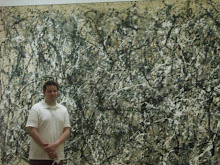Rich Migel
February 21, 2007
MCO 399
Prof. McCarthy
February 21, 2007
MCO 399
Prof. McCarthy
Culture and communication helps to shape the way people live and think in the world. Exploring the ways two cultures communicate is key to understanding the people of those nations. Through cultural continuums one is able to observe similarities and differences between Iranian and American cultures.
Iran is one of the world's oldest continuous major civilizations. The history of Iran covers over six thousand years, and throughout history, Iran has been of great political importance because of its central location in Eurasia. The cultures in general are vastly different. For the most part, America is far more liberal and open-minded then the Iranians. Their views are controlled by the Islamic Koran and the government – which restricts things ranging from how much clothing women can wear, to who can own a company. America inherited its culture from the Western European immigrants that settled it. Likewise, Iran inherited its culture from the Ancient Persian Empire. Iran, like many other countries of Western Asia, has the Persians to thank for much of their current culture. From the Persians the Iranians inherited the religion of Islam which has become so prevalent in the country that its official name is The Islamic Republic of Iran. The United States was founded on secular principles; however, Christianity has certainly become just as insidious in this country as Islam is in Iran.
Iran is more likely to be classified as a High-Context culture rather than Low-Context. In public, men rarely are allowed to talk to women due to the laws of Islam. In America however, communication and public discourse is encouraged. It is thought to be a major attribute of any democratic society and communication has always flourished here. Also, it could be said that America is a direct culture while Iran is indirect. Americans always prefer to say what is on their minds and say it quickly. For Iranians, however, indirectness and word games are a large part of their culture. They are a very poetic culture and have always loved poetry.
Another important difference is the way communication takes place. The government runs the broadcast media, which includes three national radio stations and two national television networks, as well as dozens of local radio and television stations. In 2000 there were 252 radios and 158 television sets in use for every 1,000 residents. There were 219 telephone lines and 110 personal computers for every 1,000 residents. Computers for home use became more affordable in the mid-1990s, and since then demand for access to the Internet has increased. In 1998 the Ministry of Posts and Telecommunications began selling Internet accounts to the general public. In America, however, communications has always been an independent entrepreneurial endeavor on the part of industry. The government has never been able to control the media because we are a free capitalist society, as opposed to the government-controlled media of Iran.
I would argue that both cultures are literate. Indeed, two distinctions of oral and literate have almost become a thing of the past as many cultures are literate and continue to grow in the digital age. According to R.S. Zaharna, “Whereas literate cultures may place a higher premium on accuracy and precision than on symbolism, in the oral cultures the weights are reversed. In oral cultures there appears to be greater involvement on the part of the audience, and this in turn, affects the importance of style and devices that enhance audience rapport.” I believe that both Iran and America belong under the literate field.
The comparison of these two cultures and how they communicate is increasingly important as the tension between the two is growing on a daily basis. If the two are to succeed in creating and fostering peace, it is critical that both nations and peoples attempt to understand each other’s cultures first.
I would argue that both cultures are literate. Indeed, two distinctions of oral and literate have almost become a thing of the past as many cultures are literate and continue to grow in the digital age. According to R.S. Zaharna, “Whereas literate cultures may place a higher premium on accuracy and precision than on symbolism, in the oral cultures the weights are reversed. In oral cultures there appears to be greater involvement on the part of the audience, and this in turn, affects the importance of style and devices that enhance audience rapport.” I believe that both Iran and America belong under the literate field.
The comparison of these two cultures and how they communicate is increasingly important as the tension between the two is growing on a daily basis. If the two are to succeed in creating and fostering peace, it is critical that both nations and peoples attempt to understand each other’s cultures first.


No comments:
Post a Comment